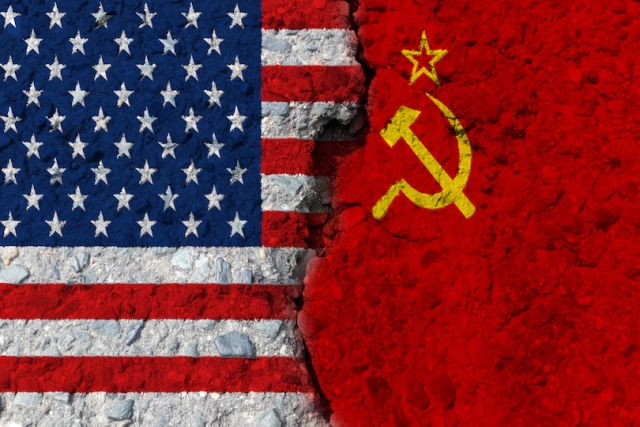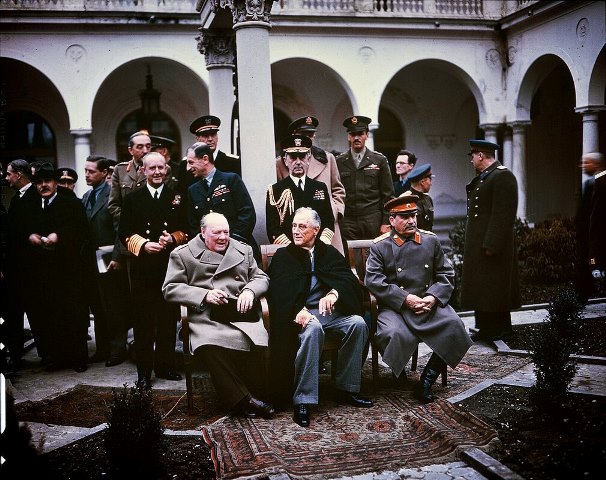The Cold War was a time of tension between the United States and the Soviet Union. It was not a conventional war of guns and bloodshed but a war of ideas and influence. The causes of the Cold War were complex, involving history, politics, and ideology. The effects of this global conflict were of great importance and shaped our world today.
This article will explore the causes and consequences of the Cold War and how it transformed the world in the 20th century.

The Cold War
The Cold War was a period of intense political, economic, and military tension between the United States and its Western allies, and the Soviet Union and its Eastern European allies. The term “cold” describes the lack of direct military conflict between the two superpowers, unlike a “hot” war like World War II.
This war is generally said to have begun after World War II. It lasted until the collapse of the Soviet Union in 1991.
The Cold War was characterized by a deep ideological divide between the Western capitalist democracies and the Eastern communist bloc. Each side saw the other as threatening its way of life.
The origins of the Cold War can be traced back to the Russian Revolution of 1917. This was the beginning of the world’s first communist state. The United States and its Western allies viewed communism as a dangerous ideology that threatened their capitalist system and way of life.
In turn, the Soviet Union saw the West as a capitalist oppressor that sought to dominate the world and prevent the spread of communism.
Crucial Events in the Cold War
The Cold War was marked by several key events and policies, including the Truman Doctrine. This doctrine committed the United States to support free people resisting communist aggression. In addition to the Truman doctrine, the Marshall plan of 1948 provided economic aid to help rebuild Western Europe after World War II. Then, the containment policy sought to limit the spread of communism to other countries.
Innovative Tech Solutions, Tailored for You
Our leading tech firm crafts custom software, web & mobile apps, designed with your unique needs in mind. Elevate your business with cutting-edge solutions no one else can offer.
Start NowThe arms race was also a defining element of the Cold War. Both the United States and the Soviet Union engaged in a massive buildup of nuclear weapons. Each side tried to outdo the other in terms of its destructive power. The fear of nuclear annihilation loomed large and shaped many aspects of international relations.

Another key feature was the presence of proxy wars, in which the United States and the Soviet Union supported opposing sides in global conflicts. Examples of these proxy wars include the Korean War, the Vietnam War, and the Soviet-Afghan War.
Despite the absence of direct military conflict between the United States and the Soviet Union, several close calls brought the world to the brink of nuclear war. One of the most famous was the Cuban Missile Crisis in 1962. This time, the United States and the Soviet Union came dangerously close to a full-scale nuclear exchange.
Why the Events of the Cold War Are Relevant Today
Studying the Cold War is important for several reasons. Here are some of the main reasons why this ideological war is relevant in the modern day:
Understanding the origins of current geopolitical tensions
The Cold War was a defining event of the 20th century that continues to shape international relations today. By studying this historic battle, we can better understand the roots of current geopolitical tensions, such as those between the United States and Russia.
Learning about the impact of ideology on international relations
The Cold War was largely a conflict between two competing ideologies: capitalism and communism. By studying the Cold War, we can gain insight into how ideology can shape international relations and the challenges that arise when two fundamentally different systems clash.
Appreciating the role of diplomacy in conflict resolution
Despite the intense tensions between the United States and the Soviet Union during the Cold War, the two sides were able to avoid a direct military conflict. This was largely due to the skillful diplomacy of leaders on both sides.
Learning about this notorious war helps us learn important lessons about the role of diplomacy in preventing conflict and resolving disputes.
Seamless API Connectivity for Next-Level Integration
Unlock limitless possibilities by connecting your systems with a custom API built to perform flawlessly. Stand apart with our solutions that others simply can’t offer.
Get StartedExploring the impact of technology on conflict
The Cold War was marked by a massive arms race, with both the United States and the Soviet Union developing increasingly advanced military technology. By studying the Cold War, we can gain insight into the impact of technology on conflict and the challenges that arise when nations develop new and more powerful weapons.
Appreciating the resilience of democracy
The Cold War was, at its core, a conflict between two fundamentally different systems of government: democracy and communism. By studying the Cold War, we can gain a deeper appreciation for the resilience of democratic institutions. We’ll also understand how they withstand even the most intense challenges.
Causes of the Cold War
What led to the prolonged ideological battle between the two world powerhouses of the time? Below are some of the factors responsible for the cold war:

Ideological Differences
The United States was a capitalist democracy, while the Soviet Union was a communist dictatorship. These two ideologies were fundamentally opposed.
Capitalism emphasizes individual rights and freedom, while communism proposes state control and collective ownership. The ideological differences between the two superpowers created an atmosphere of distrust and suspicion.
Soviet Expansionism
Another factor that contributed to the tensions of the Cold War was Soviet expansionism. After World War II, the Soviet Union began to expand its sphere of influence in Eastern Europe.
This expansion was seen as a threat to the United States and its allies, as it was seen as an attempt by the Soviet Union to spread communism and establish a global communist revolution.
The Marshall Plan
The Marshall Plan was a program of economic aid offered by the United States to help rebuild Europe after World War II. The Soviet Union saw the plan as an attempt by the United States to establish economic dominance in Europe and to prevent the spread of communism.
Transform Business with Custom CRM & ERP Solutions
Elevate your operations with a CRM or ERP tailored for you. Let’s build the perfect solution that others can't replicate—crafted to match your business's needs like no other.
Get StartedAs a result, the Soviet Union responded by establishing its economic bloc in Eastern Europe. This further contributed to the tensions between the two superpowers.
Arms Race
Both superpowers developed increasingly advanced military technology, including nuclear weapons. The fear of nuclear war loomed large during the Cold War, and the two sides engaged in a dangerous game of brinkmanship, with each side seeking to demonstrate its military superiority.
Proxy Wars
Finally, the Cold War was characterized by a series of proxy wars in which the United States and the Soviet Union supported opposing sides in conflicts around the world. These proxy wars contributed to the tensions between the two superpowers, as they were seen as a way for each side to expand its influence and demonstrate its military strength.
Effects of the Cold War
Although the Cold War officially ended with the collapse of the Soviet Union in 1991, its effects continue to be felt in the modern world. The following are some of the key effects of the Cold War.
Globalization
The United States and the Soviet Union both sought to spread their respective ideologies worldwide. This competition for influence led to the establishment of a global network of alliances and trade relationships. The Cold War also influenced the emergence of multinational corporations and the growth of international trade.
Military Development
The arms race between the United States and the Soviet Union led to massive military forces and weapons buildup. This military buildup significantly impacted the global economy, as the cost of maintaining these forces was enormous.
As such, the fear of nuclear war also had a profound psychological impact on people worldwide and contributed to a sense of global insecurity.
Tailored Tech Solutions to Drive Your Business Forward
Maximize your business potential with custom tech strategies. We deliver bespoke solutions that others can’t match, designed to solve your specific challenges with precision and impact.
Contact UsThe Space Race
The Cold War also led to competition between the United States and the Soviet Union in space exploration. This competition led to advanced space technology development and a series of groundbreaking achievements, such as the first human in space and the first moon landing.

Political Polarization
Countries were forced to choose sides in the Cold War. Many countries had to align themselves with either the United States or the Soviet Union. This led to the establishment of authoritarian regimes in some countries.
Impact on the Developing World
Many countries in Africa, Asia, and Latin America were caught up in the competition between the United States and the Soviet Union and were forced to choose sides. The United States and the Soviet Union both sought to establish their influence in these regions, often supporting authoritarian regimes and engaging in proxy wars.
Nuclear Proliferation
The arms race between the United States and the Soviet Union also led to the proliferation of nuclear weapons.
Other countries, such as China, France, and the United Kingdom, also developed nuclear weapons during the Cold War. The fear of nuclear war and the possibility of a nuclear arms race affected international relations and contributed to global insecurity.
Before you go…
Hey, thank you for reading this blog to the end. I hope it was helpful. Let me tell you a little bit about Nicholas Idoko Technologies. We help businesses and companies build an online presence by developing web, mobile, desktop, and blockchain applications.
We also help aspiring software developers and programmers learn the skills they need to have a successful career. Take your first step to becoming a programming boss by joining our Learn To Code academy today!











